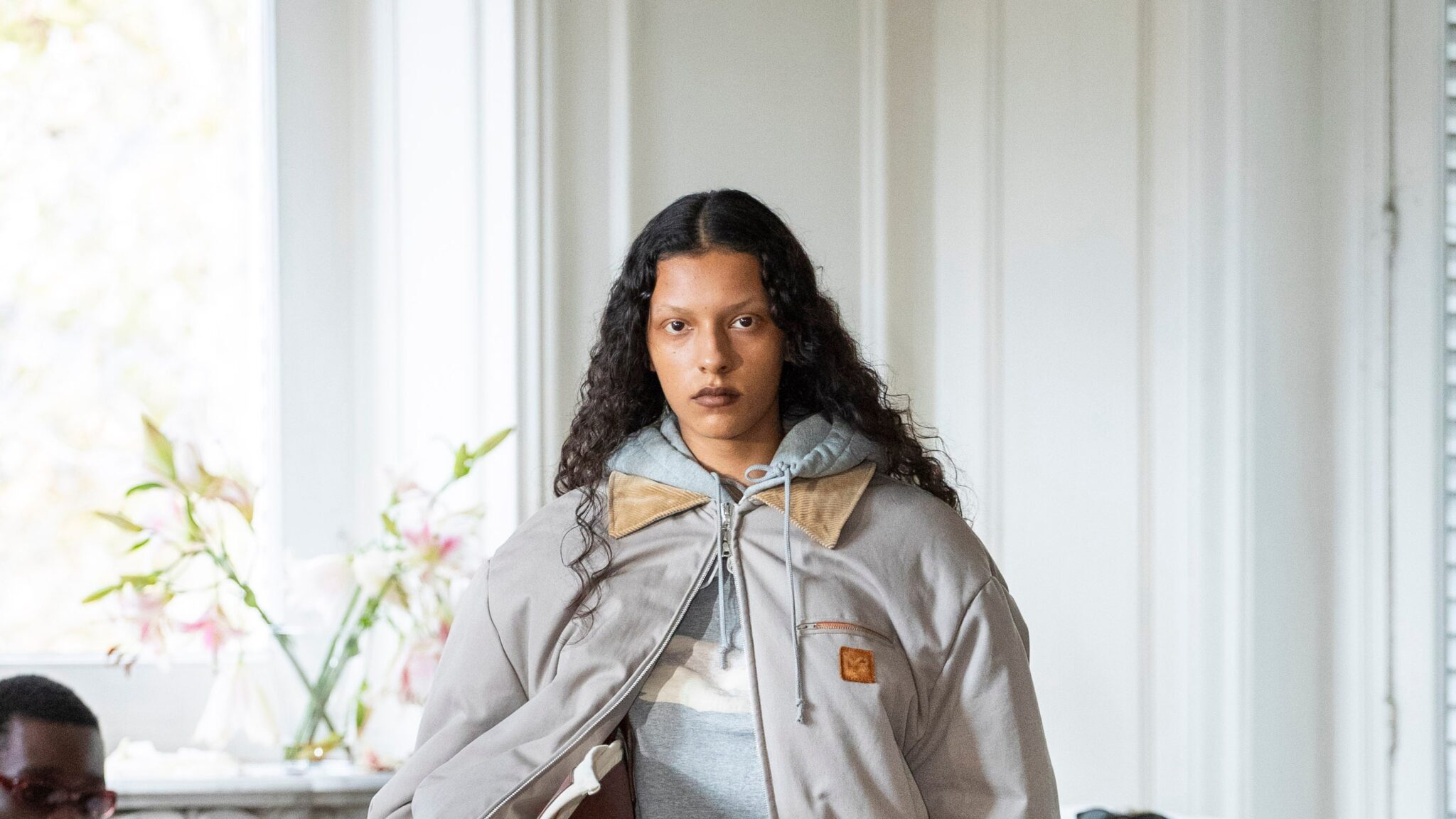The development of Meryll Rogge’s spring collection did not proceed in a straight line, from the first ideas to the final phase. While thinking about packing and losing luggage in general, the designer came across an Instagram account dedicated to chic airport style. “There was something about the atmosphere and the idea of travel, and how it went through different phases. How it used to be something glamorous and how it is now frowned upon and people try to avoid it,” Rogge said during a telephone conversation. These thoughts, plus her usual preoccupation with deconstruction and reproportioning of classic garments (there was a strong emphasis on trousers as well as trenches and Barbour-esque jackets) led in time to the creation of an enchanting sartorial pensée.
“The annoying and the beautiful thing about fashion is that there is a deadline. It’s not like making music or a film, or even architecture, where you can vary in time. Here it is six months,” she said. Not only are fashion weeks constantly flying by one after the other, she noted, but some fashion shows “lasted a minute and they were done…. The photos will last forever, but it all seems a bit mental, so we decided to at least slow down our presentation.” It was the designer’s first and was held in an apartment where the furniture, partly inverted, was covered with drop cloths as if forgotten, lost or frozen in time.
The models who brought the clothes to life also kept the clock ticking, so to speak. Some wore inflated shorts, perhaps inspired by the way nylon track pants can inflate, but these were the most extreme elements of a line-up with a strong focus on outerwear, an essential part of travel. The styling alternated between polished and sloppy – as the press statement put it, ‘clothing becomes the unlikely player of a material poem.’
The predominance of lingerie looks suggested dressing and undressing, but also the inner life versus the public life. The preparation took place via Meryll Rogge club sweaters, worn with loose trousers or maxi denim skirts and luxurious loafers. The counterpart to the latter was beaded party shoes that had a “morning-after” feel.
Bricolage is always part of Rogge’s work, both in terms of construction and the vintage aesthetic she prefers. The layering contributed to the puzzle feeling of part of the collection. You could easily imagine that someone had to put on all kinds of things to bring the weight of a suitcase, for example; or not knowing what to do with a winter coat when you arrive in a tropical climate. Travel changes expectations, just like time.
The series of dresses that closed the show combined satin and (souvenir) t-shirt jersey with motifs such as palm trees and swans. They talked about how we try to capture things that are transient. There are conscious actions, like buying a postcard, hoodie, or keychain, and then there’s the way our human existence is captured and preserved in fabric. Wrinkles and folds are proof of our existence, as is mending. Clothes are fluid and can be folded, rolled and fastened to help us find comfort and move freely through space and through life.





